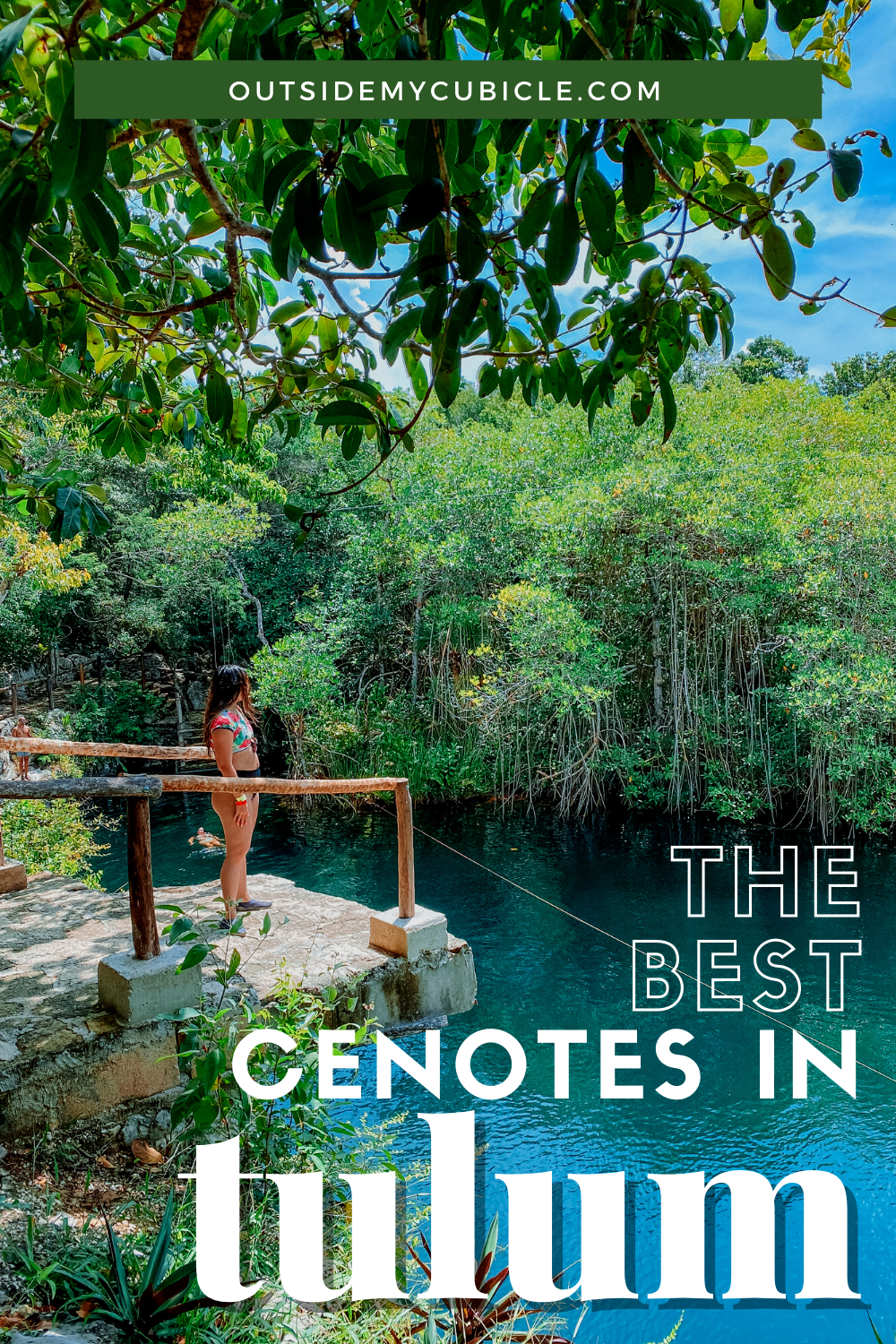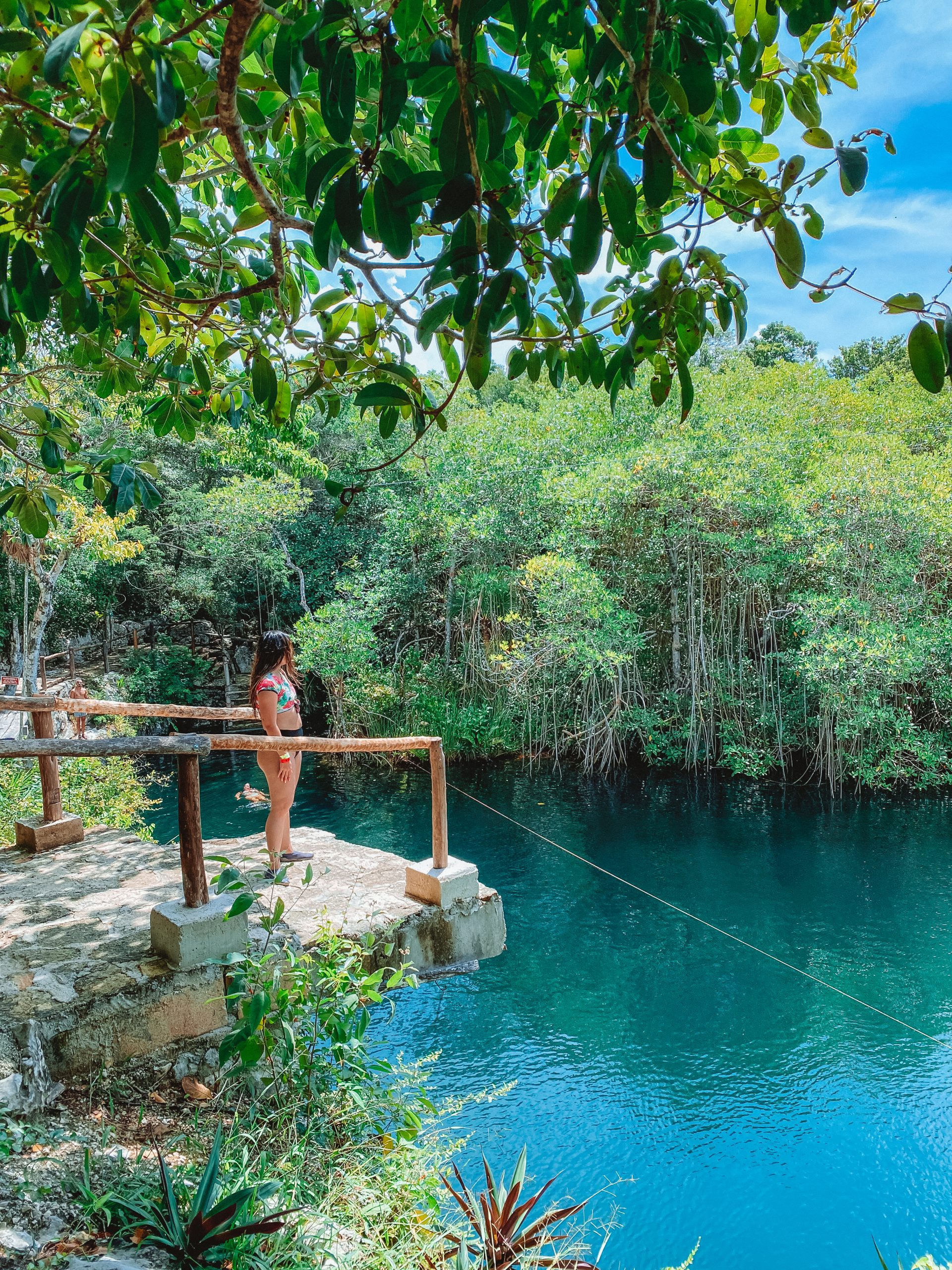
category
15 Best Cenotes Near Tulum That You Can’t Miss
The tropical weather, relaxing beaches, ancient Mayan ruins, and all the tasty Mexican food are reasons enough to book that plane ticket to Tulum. But no visit to the Yucatan Peninsula is complete without visiting its hidden gems: cenotes.
Swimming in crystal clear blue waters and exploring these breathtaking natural wonders just might be my favorite activity when visiting Tulum. Since there are over 6,000 Mexico cenotes, I thought you might ask,
…so I put together this all-you-need-to-know guide for visiting the best cenotes near Tulum just for that! 9 of them are the best cenotes in Tulum and the rest are some of the best cenotes in other parts of Quintana Roo and Yucatan. I even have a secret spot for you – just sign up here to get the lowdown!
What’s a Cenote?
Simply put, a cenote is a water-filled sinkhole. They are formed over several centuries or over thousands of years by limestone caves collapsing. The natural pool created is then filled by rain and water which flows from underground rivers.
Cenotes are protected and respected for their cultural significance to the Mayan people. Not only the main source of fresh water to the Mayans, cenotes were also considered to be the entrance to the underworld. Before I went to Tulum for the first time, I had to strategize how to maximize exploring cenotes in a short period of time, so I read up on them on a few blog posts, like this one by my friend, Amy.

If you’ve ever visited any cenotes in Tulum or Mexico, you’ll know that there are multiple types of cenotes.
- Open cenotes are fully collapsed and exposed to the sky. They are like natural open pools or ponds which allow you to swim, dive, or snorkel in fully open air.
- Semi-open cenotes tend to be mostly covered or hidden but have an opening at the top which lets the light in.
- Closed cenotes are completely underground and have no source of natural light. To access these you will have to walk down into a cave to reach the water.
- Deep (or well) cenotes are sometimes just considered open cenotes but what sets them apart are the circular shape and vertical walls which can reach up to 30 meters.
General Tips For Visiting Cenotes Near Tulum
Preserve the cenotes. In order to keep the beauty of the Mexico cenotes, it’s important that you don’t wear any makeup, skin products, insect repellents and especially sunscreen. If you must use sunscreen, make sure it’s biodegradable.
Shower before entering. In case you do have any products on your skin, as a preventative step, many of the cenotes require you to shower before you enter the natural pools.
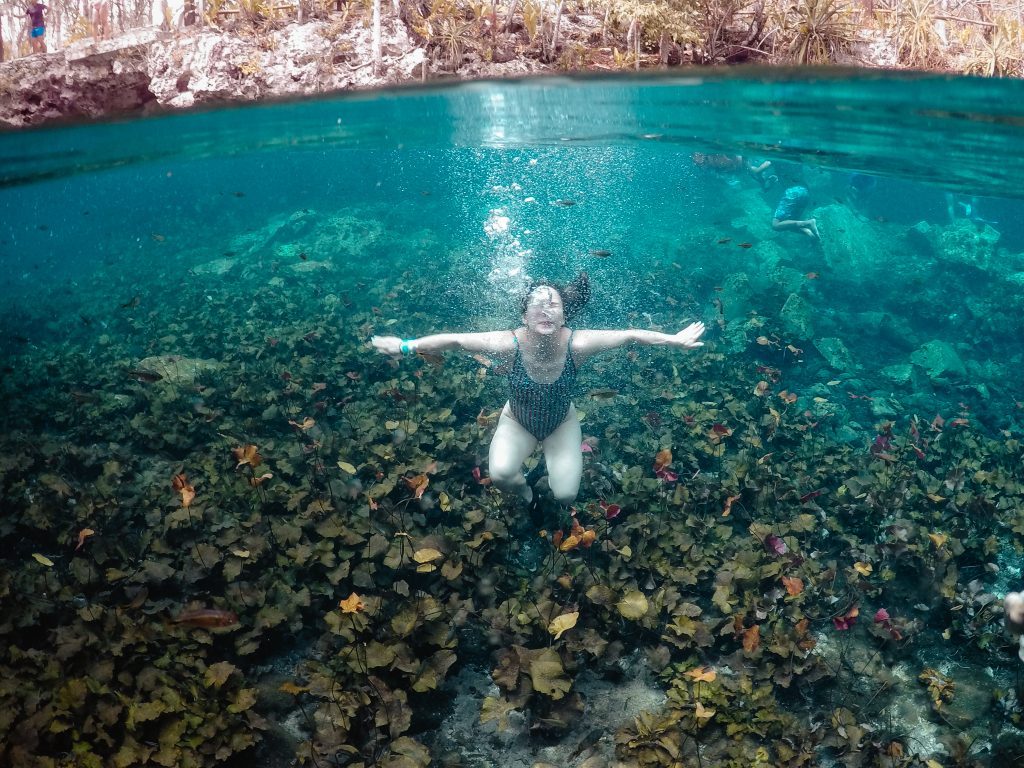
Visit cenotes early. Popular with both tourists and locals, the cenotes in Yucatan Peninsula can get very crowded, especially the ones that tour groups visit. It’s better to go right when they open (or late in the afternoon) for the best experience.
Bring cash. Pretty much all of the ticket offices for cenotes in Tulum and other areas only accept cash. Prices can change at any time, especially because of COVID, so bring extra just in case.
Some Tulum cenotes may have photo/video restrictions. Some cenotes do not allow DSLR cameras to be brought into their property. I’ve had to leave my Sony A7RIII a few occasions. Some will also ask you to pay in order to bring them in.
Check out the map. Here’s a map of all the cenotes in this guide. Before any trip, I like to look at the map to see how I can maximize my time by visiting places in batches.
9 Best Tulum Cenotes
These 9 are the best Tulum cenotes, so if you are staying close by, they are perfect to add to your itinerary.
Gran Cenote
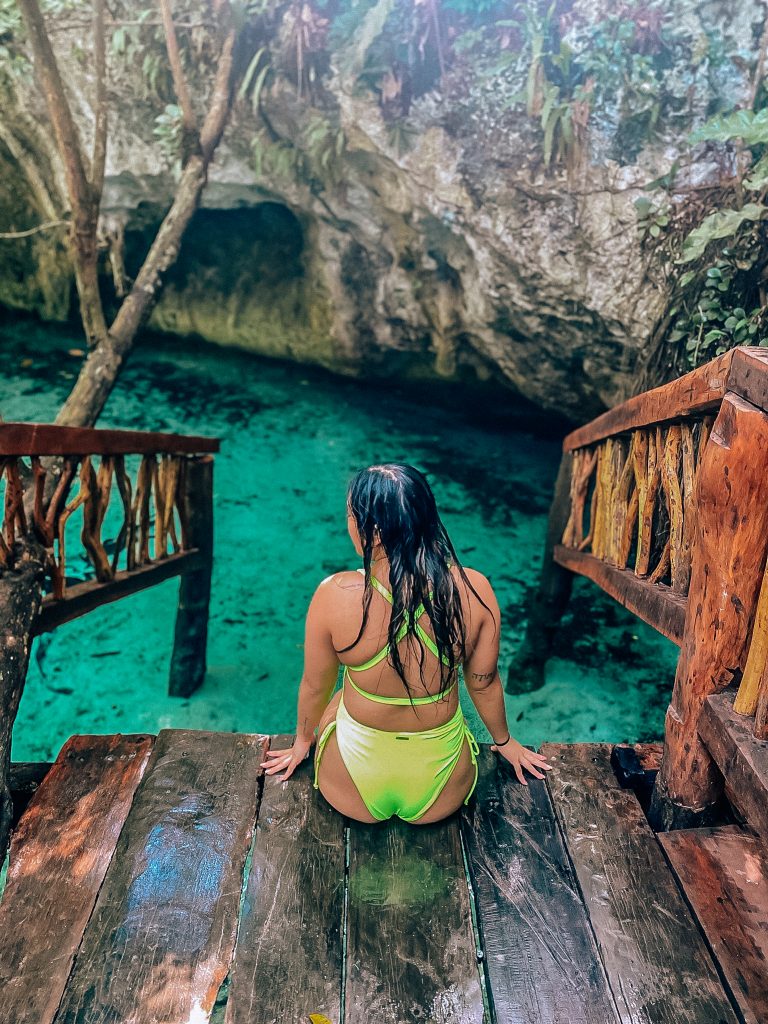
Gran Cenote is one of the famous cenotes in Tulum. The open air cenote has two snorkeling areas and is surrounded by caves and caverns. Keep an eye out for turtles in the crystal clear waters here! With the light shining into the cave openings, it’s easy to snorkel and divers can explore rock formations.
Gran Cenote entrance fee: $180 MXN
Gran Cenote hours: 8:00am – 4:45pm
Best for: swimming, snorkeling, diving

Cenote Car Wash
Also known as Cenote Aktun Ha, it’s not far from Gran Cenote. If you’re looking for a place to chill, this is the one of the best cenotes in Tulum for that since it doesn’t get as crowded. Visitors are drawn here for the deep waters which are great for cavern diving, the rope swing, the jumping platform (about 5 meters high). Its best feature is THE BABY CROCODILE!
Cenote Car Wash entrance fee: $100 MXN for swimmers, $200 MXN for divers
Cenote Car Wash hours: 9:00am – 5:00pm
Best for: chill vibe, diving, cliff jumping
Cenote Zacil Ha
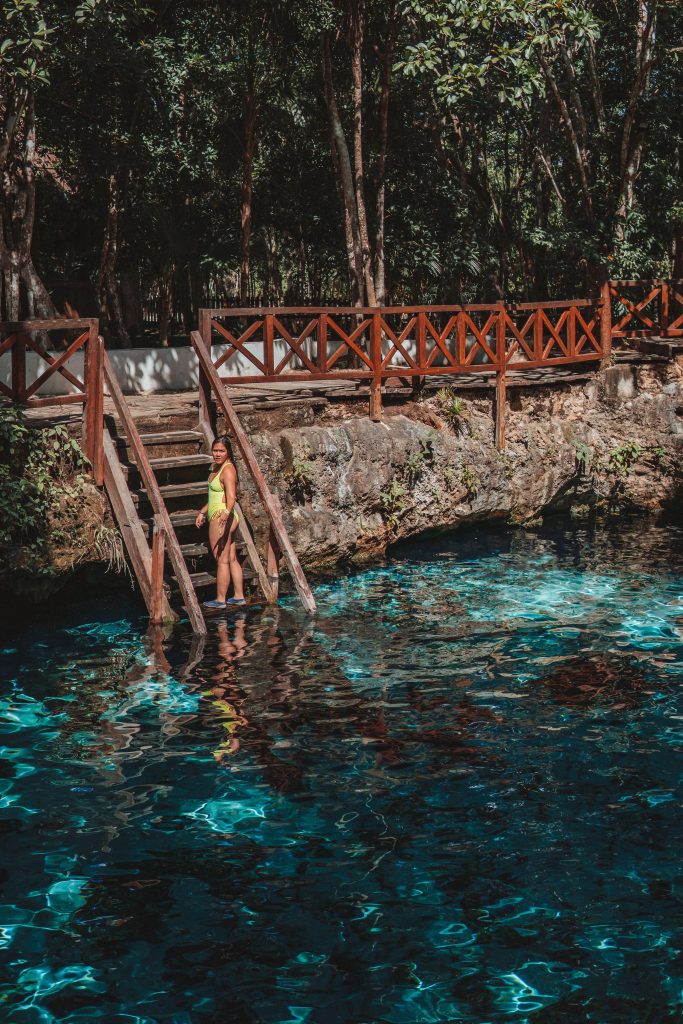
With its two man-made swimming pools, multiple platforms to jump from, a restaurant, and a zip line above the cenote, Cenote Zacil Ha is one of the most family-friendly Mexico cenotes. It reminded me of the hot springs resorts I used to go to in the Philippines with my family. It’s an awesome spot for cave diving because the deep caverns connect a few of the cenotes nearby, but you’ll need a certificate to do so.
Cenote Zacil Ha entrance fee: $100 MXN, $10 MXN to zip line
Cenote Zacil Ha hours: 10:00am – 5:30pm (open at 9:00am during high season)
Best for: swimming, diving, families
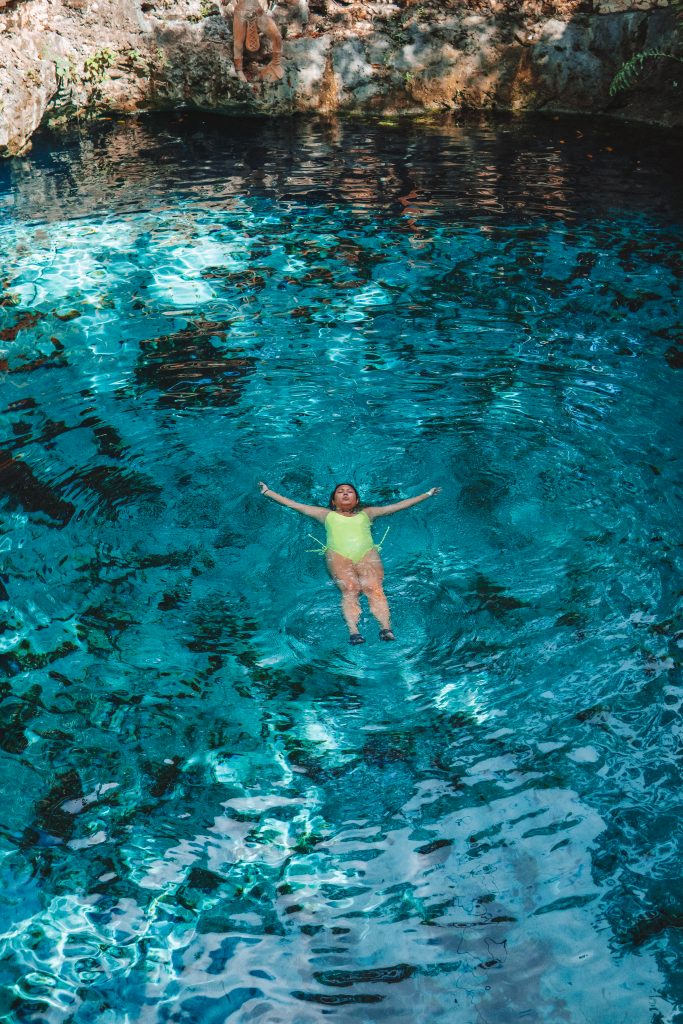
Cenote Calavera
This semi-open cenote is known as, “The Temple of Doom,” because of the three sinkholes that resemble a skull. The deep drop into the cave is ideal for cenote jumping; It’s not my thing (I’m a total baby), but would you do it? If it’s not your thing as well, you can climb down the ladder. This spot is a fave for divers because they can see where the fresh and saltwater mixes below the surface.
Cenote Calavera entrance fee: $100 MXN
Cenote Calavera hours: 9:00am – 5:00pm
Best for: cenote jumping, diving
Cenote Dos Ojos
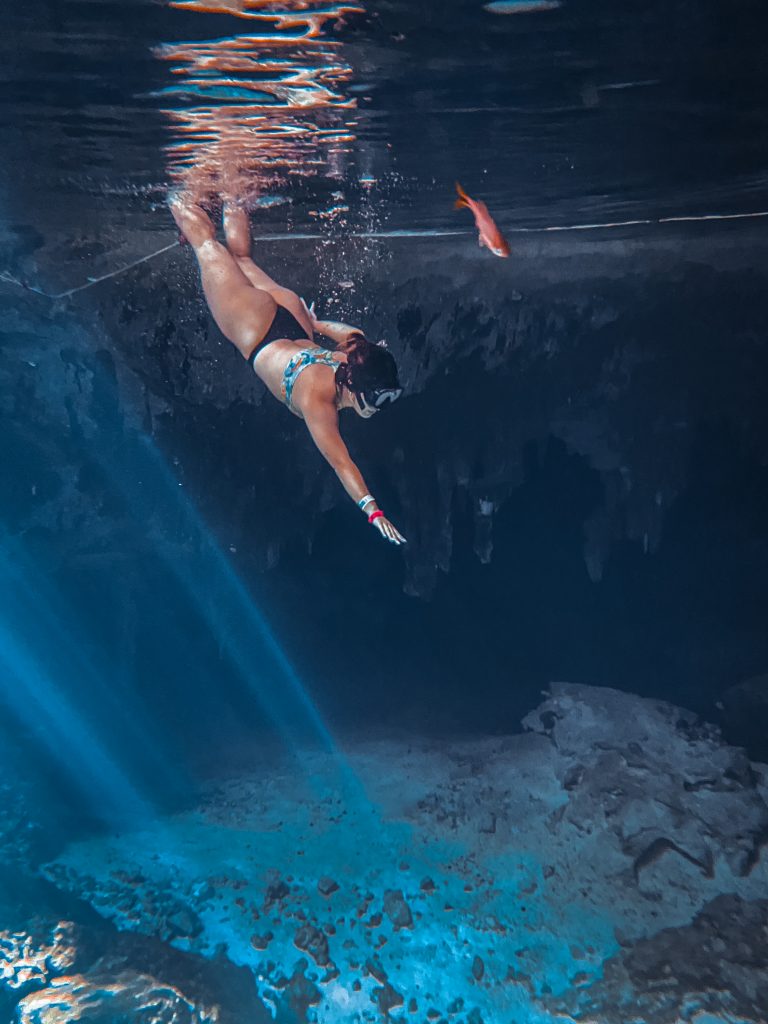
Right away you’ll see why Cenote Dos Ojos is perfectly named, “two eyes” and one of the most Instagrammable Tulum cenotes. The crystal clear blue water which fills what looks like two sinkholes, is actually a single cenote that connects the two by a long passage.
Also being one of the best Tulum caves, when you come to Cenote Dos Ojos, don’t miss “Bat Cave,” where you can see bats hanging from stalactites. You can take a snorkeling tour or opt to go diving – it’s connected with one of the longest underwater cave systems in the world!
Because of all the beautiful natural features, Cenote Dos Ojos is one of the most popular cenotes in Tulum so keep in mind that it can get hella crowded.
Cenote Dos Ojos entrance fee: $350 MXN
Cenote Dos Ojos hours: 8:00am – 5:00pm
Best for: IG photos, swimming, snorkeling, diving
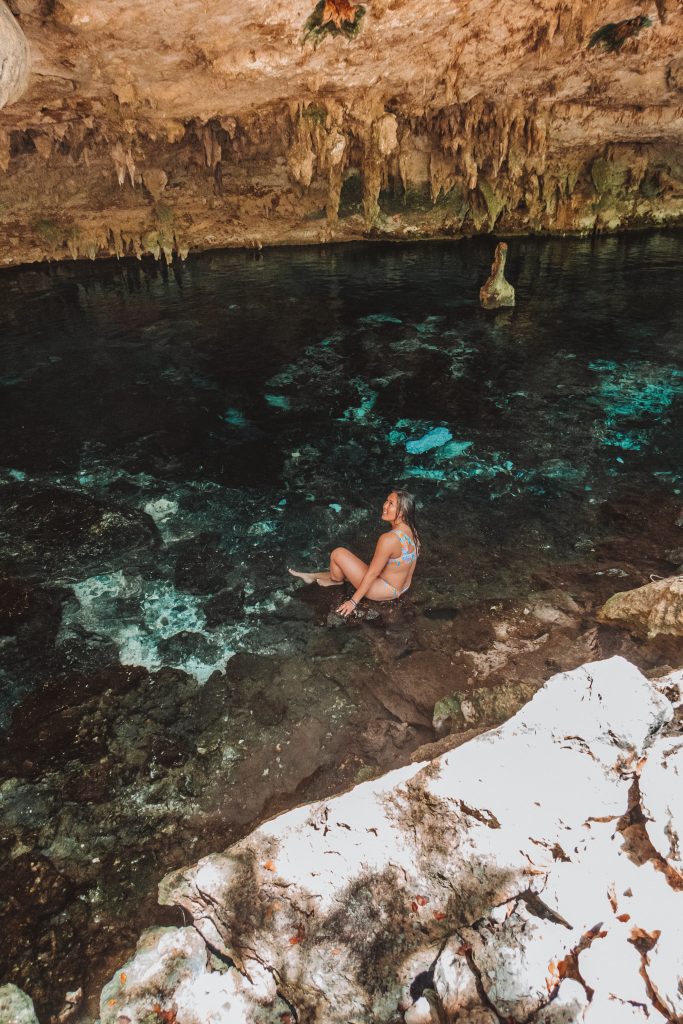
Casa Cenote
Located 500 meters from the beach and connected underground to the ocean, there’s a mix of both fresh and seawater here. Like most Mexico cenotes, it’s also known for its famous crystal clear waters which help you to see the roots of the mangroves surrounding the cenote. If you’re looking for a little something different, you can rent paddle boards and kayaks here.
Casa Cenote entrance fee: $150 MXN
Casa Cenote hours: 8:00am – 5:00pm
Best for: swimming, snorkeling, scuba diving, free diving, paddleboarding, kayaking
Cenote Jaguar
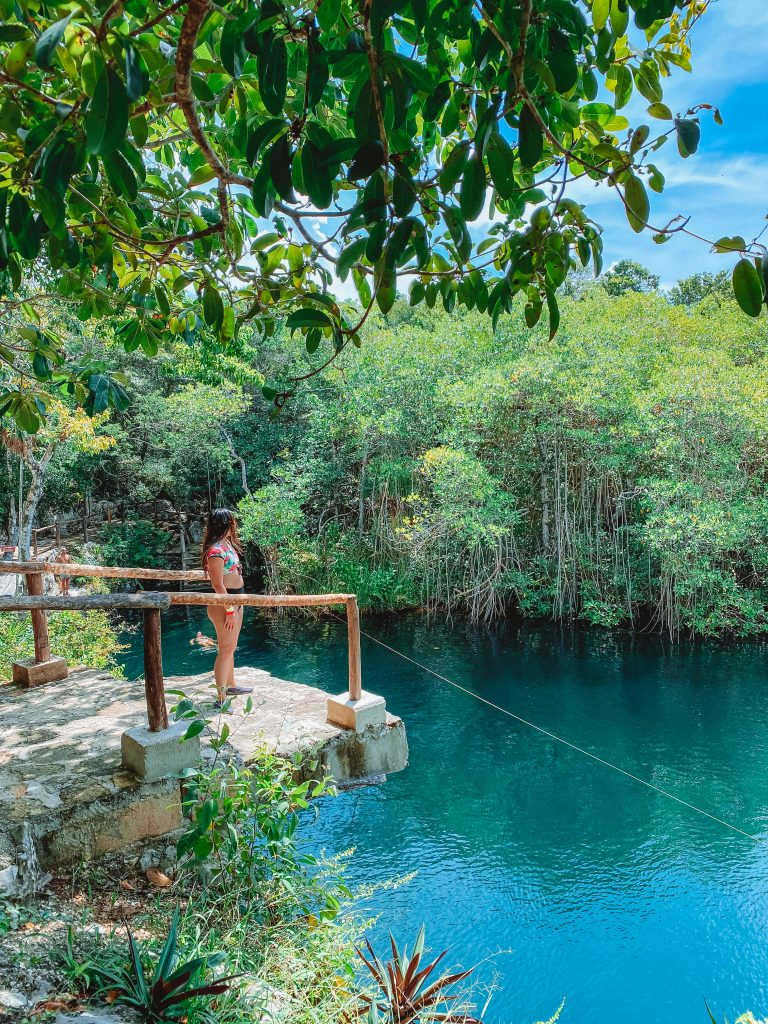
One of the three cenotes in Parque Dos Ojos, Cenote Jaguar is an open cenote surrounded by mangroves in the middle of the rainforest. Two jumping platforms and a zip line make it a fun spot for both kids and adults. Teresa convinced me to do one of the jumps and get on the zip line (comes with the entrance fee, and you can go twice), and it was actually fun!
Cenote Jaguar entrance fee: $250 MXN
Cenote Jaguar hours: 8:00am – 5:00pm
Best for: swimming
Sac Actun
Sac Actun is more than just another cenote in Mexico. This is the best underground Tulum cenote experience because you’ll be swimming through the longest underwater cave system in Mexico. There will be bats, fish, and stalactites that will hang so low they touch your head. Because of the intricate system of these passages, you’ll need a guide in the water. If you wanna go scuba diving, you’ll need a certain level of experience as some points can get extremely deep.
Sac Actun entrance fee: $450 MXN (includes gear and guided tour)
Sac Actun hours: 8:00am – 5:00pm
Best for: swimming, diving
Cenote Nicte Ha

The third cenote in Parque Dos Ojos is still off the beaten path compared to other cenotes in Tulum so it’s also not as crowded. Largely above ground like a pond, get your pics for the ‘gram here with the beautiful lily pads floating in the water.
Cenote Nicte Ha entrance fee: $200 MXN
Cenote Nicte Ha hours: 8:00am – 5:00pm
Best for: swimming
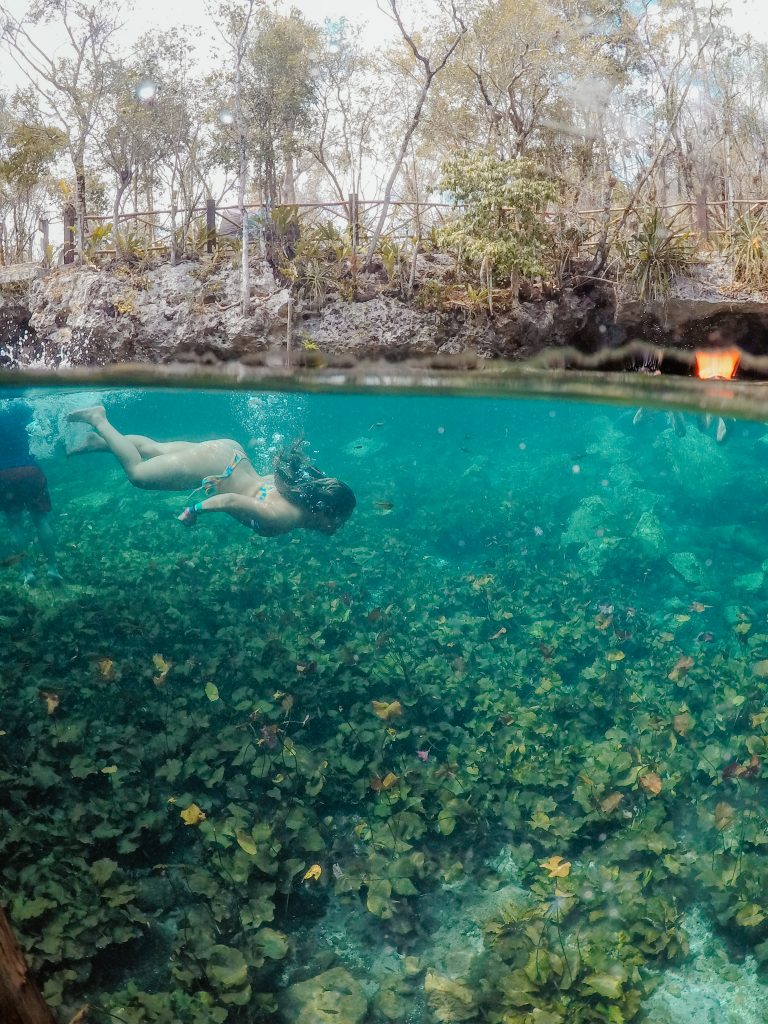
6 Other Must-Visit Cenotes Near Tulum
If you’re feeling like venturing out further from the immediate Tulum area, I gotchu covered with these next 6 best cenotes near Tulum! Don’t miss out on these other cenotes in Yucatan and Quintana Roo areas.
Cenote Azul (Playa del Carmen)
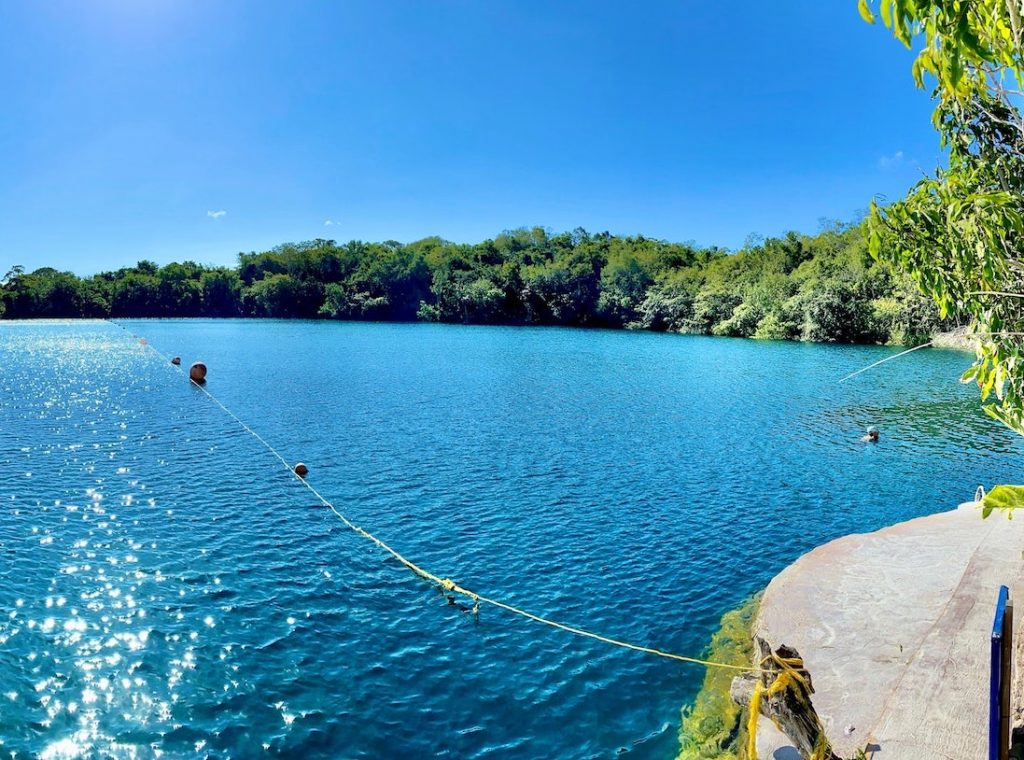
Photo by Leafar Perez on Unsplash
As one of the biggest Mexico cenotes, the “Blue Cenote,” definitely stands out because of its bright turquoise waters. It’s close to other Playa del Carmen cenotes like Cenote Cristalino and Cenote Kantunchi. With shallow areas and other areas where you can sit or stand on large white rocks, it’s suitable for the whole family.
The deeper pool, separated by an elevated walkway, is great for diving and cliff jumping and because of its size, Cenote Azul will never feel too crowded. You’ll definitely feel like you’re in a natural fish spa here with all the nibbling fish!
Fully accommodated with changing rooms and bathrooms, a snack bar & restaurant with tacos, and a shop for fish food, it has everything you need. Cenote Azul is about 40 minutes away from Tulum.
Cenote Azul entrance fee: $120 MXN
Cenote Azul hours: 8:30am – 5:00pm
Best for: families, chill vibe, swimming
Cenote Choo-Ha (Coba)
Cenote Choo-Ha is the best of the three cenotes in Coba for snorkeling. It’s name meaning, “dripping water,” you’ll find stalactites with dripping water everywhere in this cave which is reachable by walking down a fair amount of wooden stairs.
In addition to snorkeling, the shallow clear waters make it ideal for swimming and relaxing, but you definitely need water shoes because of all the rocks. Since it doesn’t get crowded too often – you just might have a silent and peaceful visit! Because it is underground, it’s a great choice to visit even on a cloudy day.
Cenote Choo-Ha entrance fee: $100 MXN
Cenote Choo-Ha hours: 8:00am – 6:00pm
Best for: swimming
Cenote Tankach-Ha (Coba)
Cenote Tankach-Ha is more ideal for diving and cliff jumping. Another one of the cave cenotes in Yucatan Peninsula, you’ll reach the water by walking through the entrance which is just a small hole in the ground. It’s literally JUST A CAVE with an artificial light, so only bring down what you need.
The two platforms – 5 meters and 10 meters high – allow you to practice your diving skills into the deep water below which can reach up to 35 meters. Take a break from the cenotes in Tulum and make a day trip to Coba. You can visit the Coba ruins nearby then cool off in Cenote Tankach-Ha and Cenote Choo-Ha which share an entrance.
Cenote Tankach-Ha entrance fee: $100 MXN
Cenote Tankach-Ha hours: 8:00am – 6:00pm
Best for: platform jumping, diving
Cenote Suytun (Valladolid)
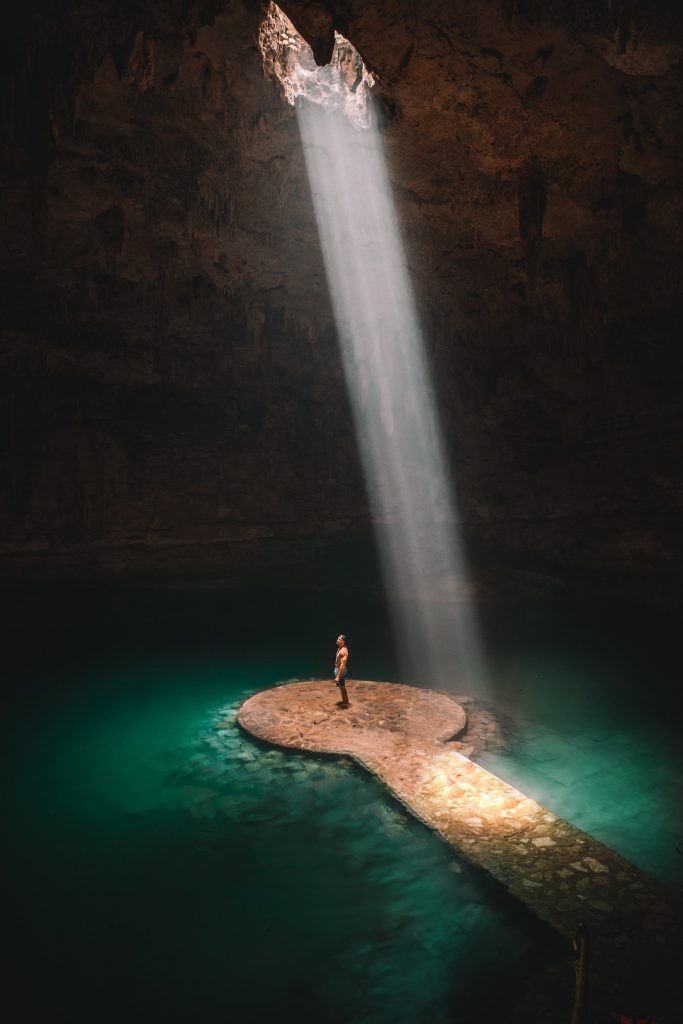
Photo by Jared Rice on Unsplash
Valladolid is the farthest area from Tulum on this list, but it has a few of the best cenotes near Tulum that you can’t miss, especially Cenote Suytun. Meaning “center stone,” you might’ve this Insta-famous cenote with someone standing on a stone in the middle of a semi-open cave with a light beaming down.
Because of its popularity, you’ll probably have to wait in line to get that epic IG shot. While the best time for the light beam is from 12pm-2pm, it’s also the most crowded time so it’s better to go early, especially since swimming is also allowed. Prior to ‘Rona, it was said that up to 300 people could be in the cave due to all the tours that roll through here.
There is a “secret” second cenote on this site. While you can’t swim in it, the nature in the area is really beautiful. There’s also a buffet restaurant on site, but if you’re not part of the tours, it’s not really worth it.
TIPS: 1) You’ll get your best IG shots with a camera that does well in the dark. 2) Valladolid is an hour behind Tulum – plan accordingly!
Cenote Suytun entrance fee: $120 MXN
Cenote Suytun hours: 9:00am – 5:00pm
Best for: that epic IG pic
Cenote Zaci (Valladolid)
The easiest one to get to in Valladolid and the cheapest, Cenote Zaci is just a 7 minute walk from the town centre and far enough from the Riviera Maya tour groups. Half of this cenote is covered and the other half is open to the sky. The rock walls are covered in greenery and you can see hanging stalagmites and stalactites here too. While a great spot for swimming, it’s not so great for snorkeling because of all the algae in the water.
Cenote Zaci entrance fee: $30 MXN
Cenote Zaci hours: 8:00am – 5:30pm
Best for: swimming, budget travelers
Cenote Ik Kil (between Piste and Valladolid)

Photo by Mattia Verga on Pixabay
This cenote in Yucatan Peninsula is popular for being combined with a visit to Chichen Itza. You’ll wanna visit this deep cenote for it’s lush jungle vines that give it the perfect dramatic backdrop. Come here to cool off after visiting Chichen Itza, but know that you’ll probably be doing so with all the people on tours also. You can’t jump from the surface of the cenote, but there are jumping platforms for the daredevils and stairs for everyone else.
Around here you’ll also find lockers and changing rooms, two restaurants and a couple of shops, sunbeds and hammocks for relaxing, and even on-site cottages to spend a few days there.
Cenote Ik Kil entrance fee: $80 MXN
Cenote Ik Kil hours: 9:00am – 5:00pm
Best for: swimming, visiting with Chichen Itza
What to Bring To Mexico Cenotes
Cash. As I mentioned before, most cenotes near Tulum only accept cash. The entrance fees for the cenotes on the list range as low as $30 MXN (for Cenote Zaci) and up to $450 MXN (for Sak Actun), but due to various factors and especially COVID, prices can change so it’s best to bring a little extra.
Waterproof Camera. Each cenote has its own unique features, so you’ll definitely wanna be ready to snap all the photos for the ‘gram. Just make sure that whatever camera you’re using is waterproof to prevent damage like this one for your phone. I also recommend getting a Dome for your GoPro.
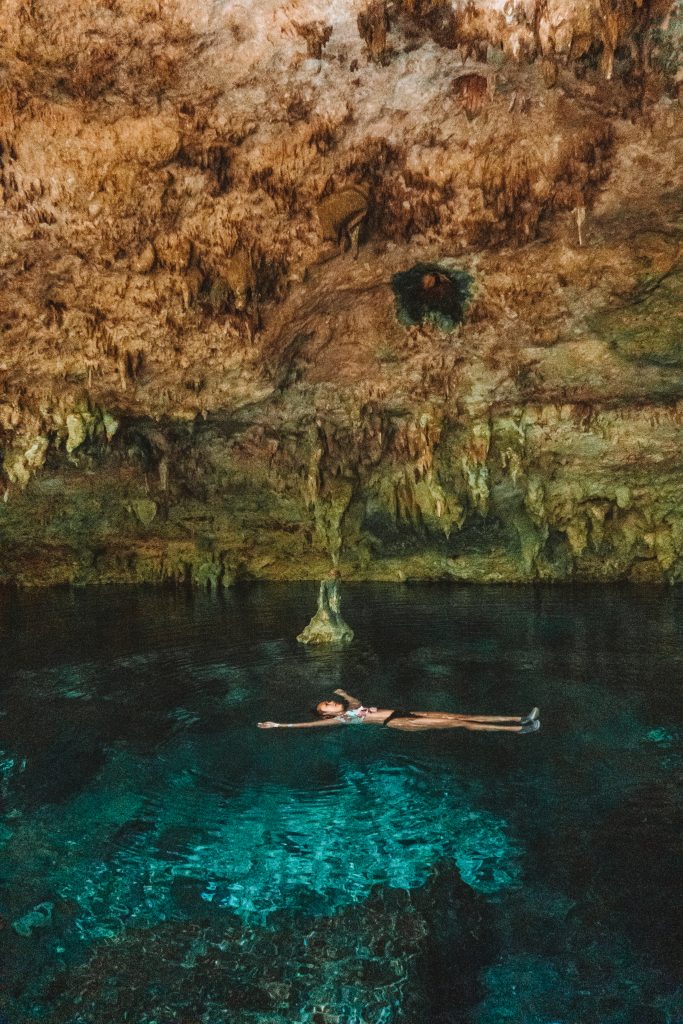
Water Shoes. A lot of these cenotes in Yucatan Peninsula either require you to walk down steps that can get slippery or have rocks in them, so water shoes are super useful. It’s also one less thing to worry about changing because you can wear these in and out of the water!
Towel. Some cenotes have towels for rent, but not all. Just bring a towel of your own to dry off with in case you visit one that doesn’t have any.
How to Get to the Best Cenotes near Tulum
There are a few general ways that you can get to Tulum cenotes and the other cenotes in Yucatan Peninsula:
Rental Car. This is by far the easiest way to get to the cenotes near Tulum. You can go on your own time, visit as many (or few) cenotes as you want, and when we went it only cost us less than $100 USD to rent a car for 4 days.
Colectivos. Most often minivans, colectivos are a shared ride to get you where you’re going. They are very cheap (around $20-$40 MXN one way) and are the best way to get to these cenotes in Yucatan Peninsula if you’re on a budget. When catching a colectivo, you tell them where you’re going, they tell you which van to go to, and usually will wait to leave until the colectivo is full. Pay the driver when you get off at your destination.
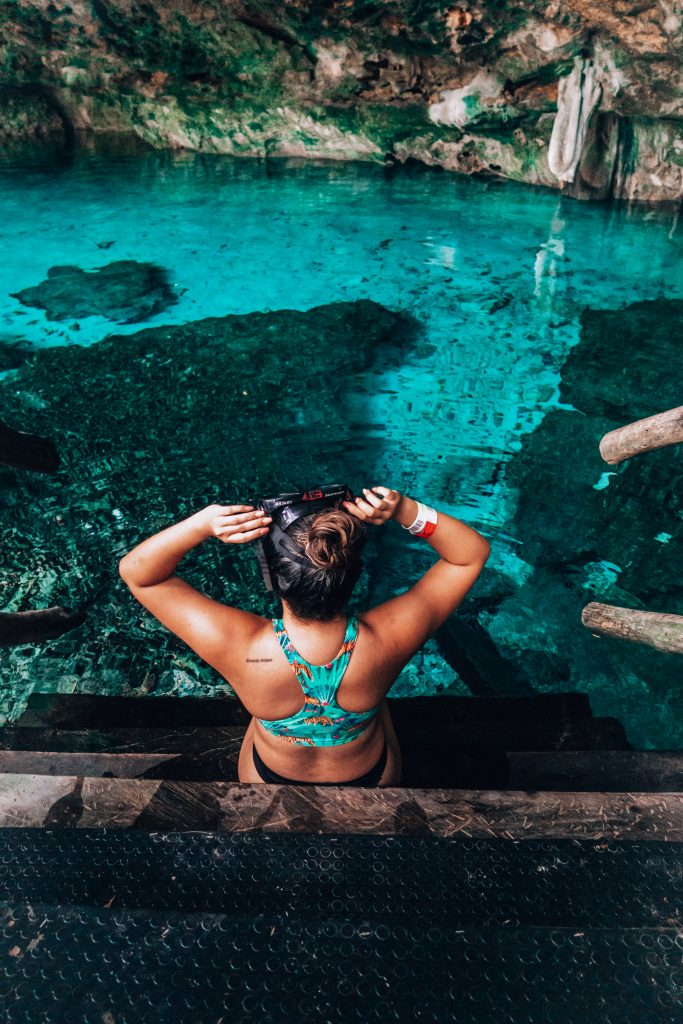
Taxi. This option is probably best if you’re only visiting one of the Tulum cenotes, or two that are near each other. Even though taxis aren’t extremely expensive, multiple rides can add up pretty quickly.
Scooters (for Valladolid). If you’re already in Valladolid, renting a scooter to visit a few of these cenotes near Tulum might be ideal as they’re a short ride away from the town center. You can rent on an hourly or daily basis.
Want to know the secret cenote near Tulum?
If you are a foodie like me, check out my ultimate guide to the best restaurants in Tulum!
SAVE THIS POST:
